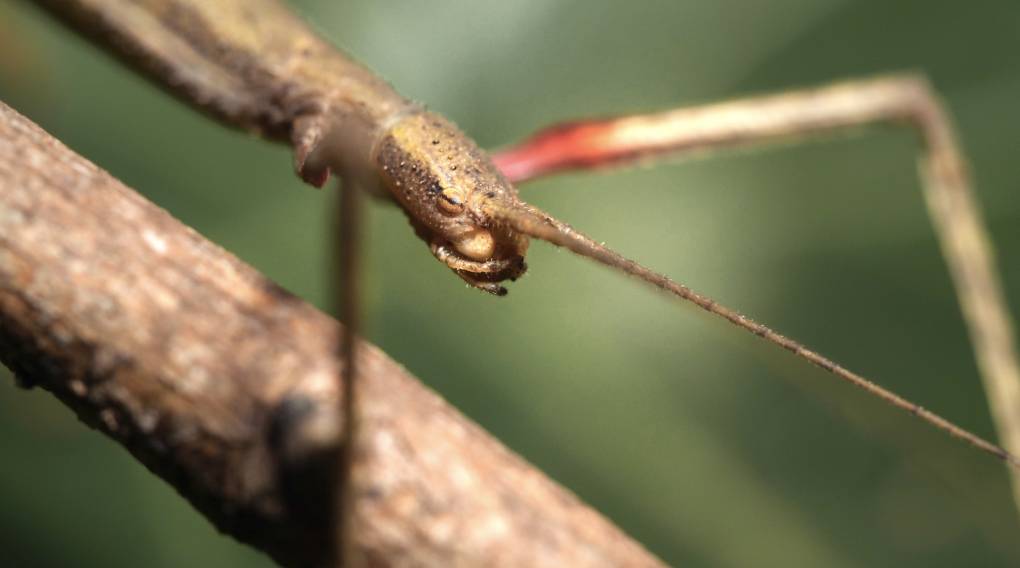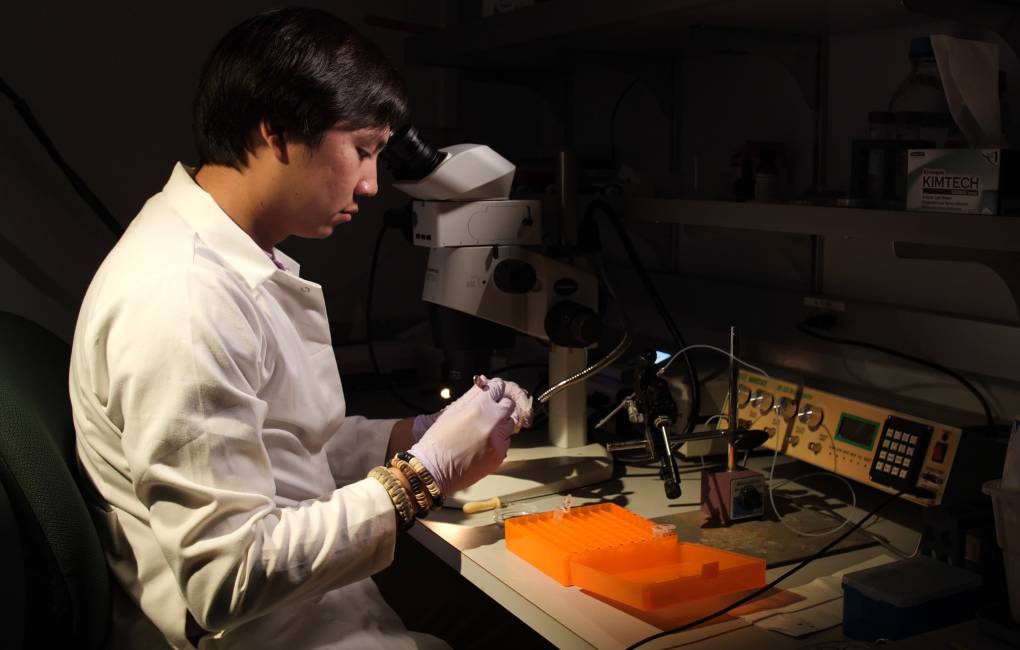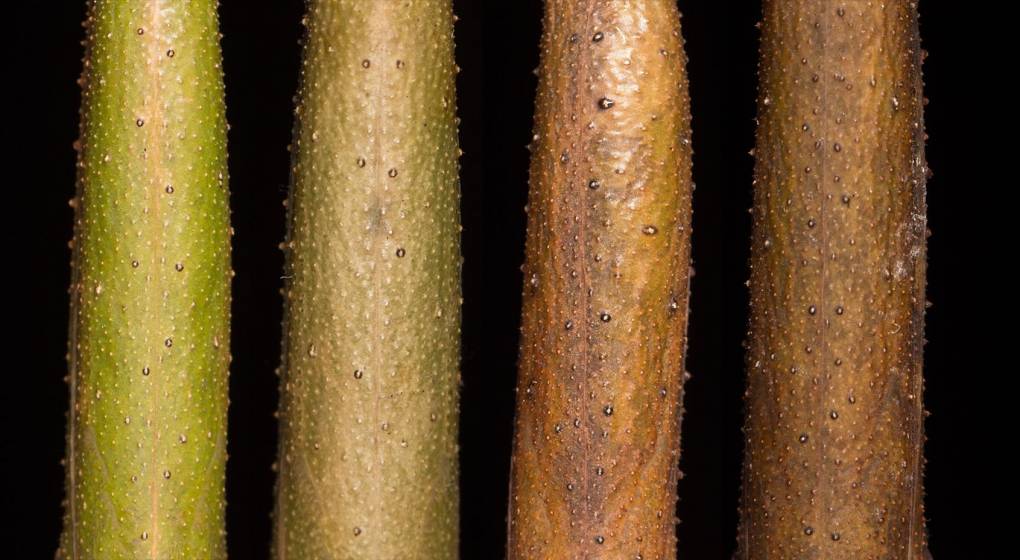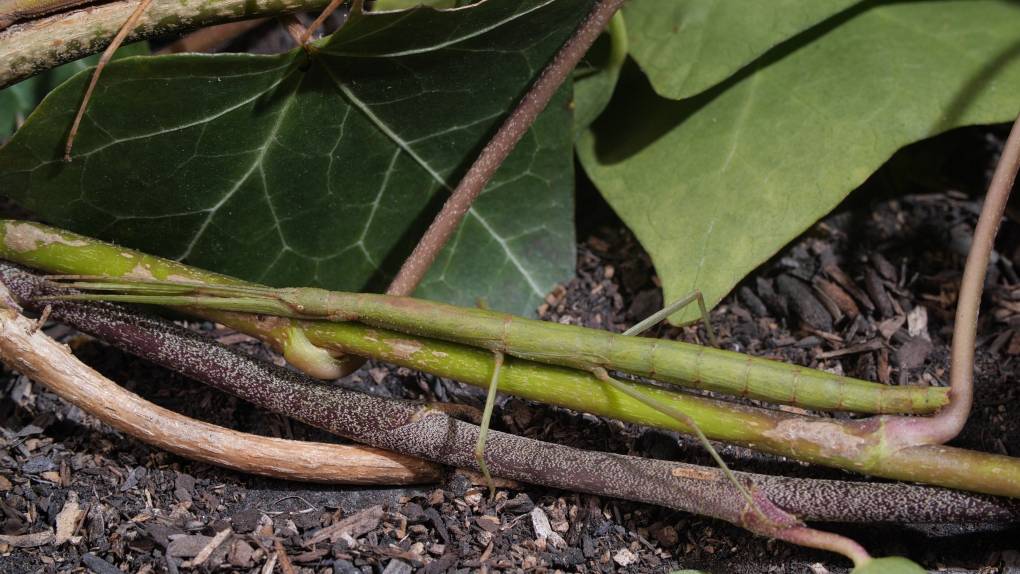Walking Sticks Stop, Drop and Clone to Survive
There’s that old cheesy joke: What’s brown and sticky? A stick.
But sometimes it’s not just a stick — but a walking stick. This non-native insect, originally from India, relies on clever camouflage to hide from predators. They’re so skilled at remaining undercover, you may not have noticed that they’ve made themselves right at home in your local park.

Some Bay Area researchers are studying the insects’ genetics to learn more about how they are such masters of camouflage.
“I can’t think of any other insect as effective as they are in remaining hidden in plain sight,” said Edward Ramirez, an undergraduate researcher at the University of California, Berkeley who is currently studying the genetics of Indian walking sticks.
“‘How is this possible?’ was always the question that came to mind, so I wanted to search for a more clear answer.”
Fortunately, the unusual insects, who live on every continent except Antarctica, are readily available as subjects.

“It’s a very prevalent invasive species that can be found all throughout California, including right here on campus,” Ramirez said. “All of our specimens we study were collected when they’re out and about at night around the nearby creek, since they’re nocturnal.”
Colors are an important part of a stick insect’s camouflage defense. When these stick insects first hatch, they’re brown. As they mature and go through successive molts, they may change to an array of vibrant colors – from light green to a much darker brown.

“Having adults in a variety of colors allows them to occupy and better survive in different parts of a plant,” Ramirez said. “Having a darker stick insect may allow it to blend in more with the trunk of a tree or the darker stems of ivy and blackberry. On the other hand, lighter green stick insects have an advantage on greener surfaces such as the bottom of leaves or greener stems of plants.”
These differences in color also affect how well they can escape predators. A darker stick insect can use another means of defense — behavioral mimicry — if it feels threatened. Once it tucks in its limbs, it’ll fall down to the ground and “look like a dead twig,” Ramirez said.
One puzzle Ramirez is trying to solve is why there’s such a colorful palette of Indian walking sticks. They’re parthenogenic, which means the females don’t need males to reproduce. They can actually clone themselves.

“So to see a wide variety of different colors in the stick insects is very interesting because if they’re clones of the mother they should all be the same exact thing, but they’re not,” he said.
“That’s something that’s really interesting to explore and would definitely require more genetic analysis, which we haven’t gotten to quite yet. But hopefully someday that’ll be possible in the future,” he added.
One reason could be due to genetic mutations.
“There are plenty of other species that undergo parthenogenesis such as aphids, species of bees, ants, wasps, flies, and others which all go through similar asexual cloning mechanisms and can have mutations,” Ramirez said. “However, these insects contain very little or do not have any noticeable color variation compared to the Indian stick insects.”
Ramirez said he hopes to use the CRISPR/Cas9 gene editing tool to try and unlock the mysteries behind the Indian walking stick.
He’s also planning to apply to dental school after he graduates later this year, with the goal of using what he’s learned studying walking sticks. His background in genetics and gene editing will help him in emerging fields of research, such as bioengineering human teeth using stem cells.
“This would be revolutionary for dentistry as patients who have lost their permanent teeth could have them replaced,” Ramirez said.
